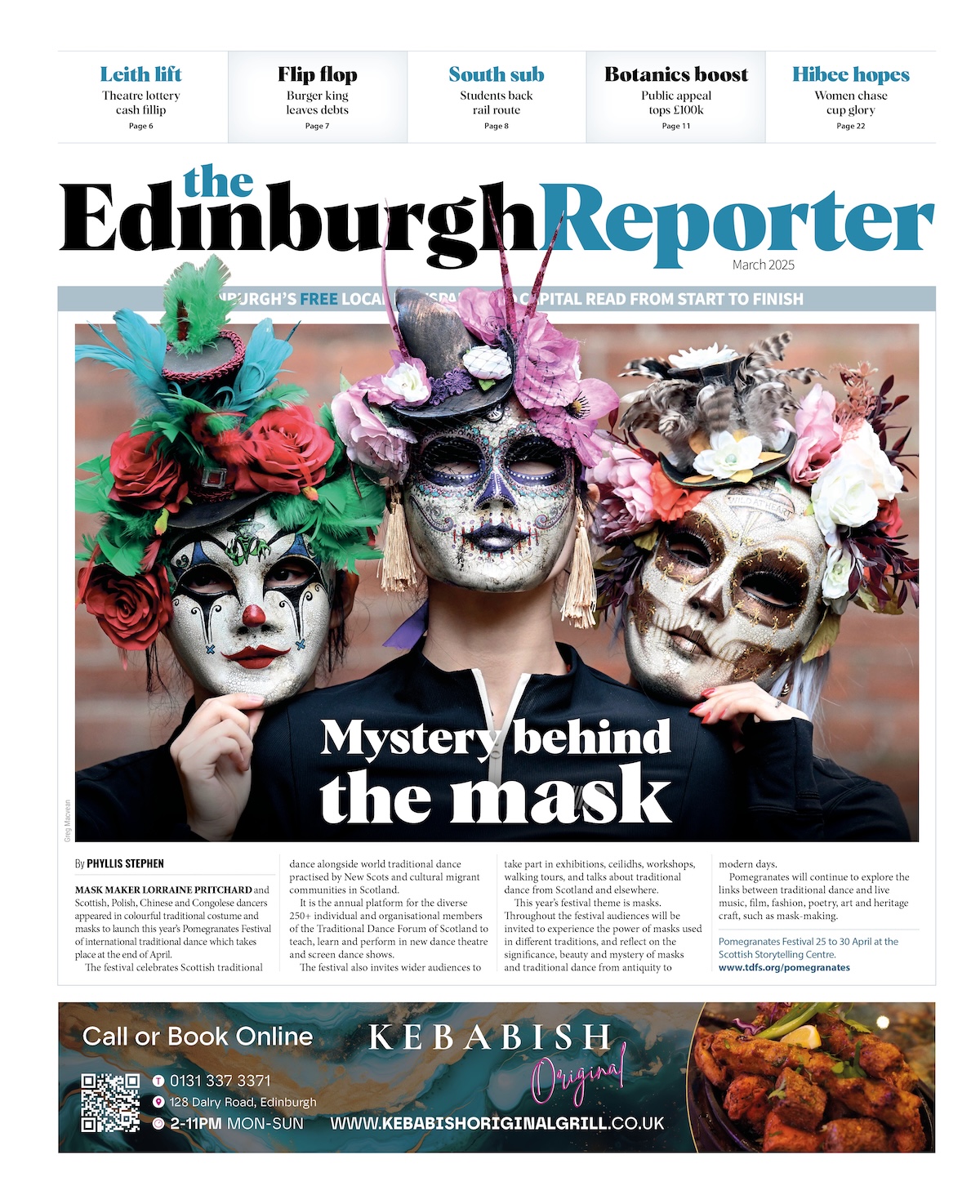Philip Glass meeting Patti Smith; heavy-metal Shakespeare from China; Beethoven’s Fidelio set in outer space; The Festival Theatre’s nooks and crannies taken over in four days of dance. Yes, the Edinburgh International Festival’s 2013 programme was unveiled today, and it’s nothing if not eclectic.
Festival director Jonathan Mills has taken a technological theme this year, but that doesn’t just mean cutting-edge gadgets and gizmos. The programme looks back into history at the way art and technology have cross-fertilised, from Beethoven making use of the latest metal-framed pianos for his massive ‘Hammerklavier’ Sonata (performed by Andreas Haefliger on 17 Aug) to Leonardo da Vinci’s astonishing Renaissance contributions to the understanding of human anatomy (at the Queen’s Gallery, Holyrood Palace, 2 Aug-10 Nov).
Things technological come right up to date, though, in Korean media artist Hyung Su Kim’s Media Skins, LED facades that are set to transform the outside of the Usher Hall and Festival Theatre, and in Cybraphon, an emotional robot band in a box at the National Museum of Scotland that obsessively googles itself and checks its tweets to discover how popular it is.
Two brand new musical performances even offer the chance for you to get involved in their creation. Edinburgh-born cellist Peter Gregson’s To Dream Again (19-20, 22-24 Aug) allows audience members to interact with the performance in real time, meaning that each performance will be entirely unique. And for US composer Tod Machover’s Festival City, performed by the RSNO on 27 Aug, we’re all invited to contribute sounds inspired by Edinburgh as a festival city, then transform them using specially created apps.
Edinburgh-based theatre company Grid Iron takes technology into the far future, imagining a time when we have abandoned Old Earth and arrived on a new planet where we can be the centre of our own universe. Leaving Planet Earth takes place at the Ratho Climbing Arena (10-24 Aug). And the futuristic vision of Beethoven’s Fidelio is courtesy of Opéra de Lyon and US contemporary media artist Gary Hill, who sets the composer’s only opera on board a doomed spacecraft hurtling towards infinity (10 & 12 Aug).
Elsewhere, the festival’s theatrical offerings embrace a wealth of Samuel Beckett – five plays and 19 films – and the Wooster Group’s radical reinterpretation of Shakespeare’s Hamlet, alongside the Beijing People’s Art Theatre’s production of Coriolanus, which includes live music from two Chinese heavy-metal bands.
An ambitious dance-themed festival-within-a-festival curated by Scottish Ballet, Dance Odysseys, has eight productions, plus talks, discussions and films, which will take over the Festival Theatre from 16 to 19 August.
And the festival’s music programme is as strong and diverse as ever, from all-choral evenings from the Estonian Philharmonic Chamber Choir (29 Aug) and The Sixteen (21 Aug), through to Philip Glass and Patti Smith celebrating the life and career of their friend, poet Allen Ginsberg, in The Poet Speaks (13 Aug). High-profile musicians making their way to Edinburgh in August include Valery Gergiev, Mitsuko Uchida, Ian Bostridge, Pinchas Zukerman, Midori, Andreas Scholl and Pierre-Laurent Aimard.
It’s a strong line-up, diverse yet focused, and Mill’s technological theme offers some unusual perspectives and insights into work both familiar and lesser-known. He said: ‘Festival 2013 presents a journey inspired by the way technology seizes and shifts our perceptions of the world. It is the role of artists to think differently, to offer us provocations and inspiring contrasts to our everyday lives. Artists’ innovation in everyday materials has played a key role in the evolution of artistic techniques and thinking, and of how we experience the world. We celebrate this interaction through historical as well as contemporary work.’
Photos Eoin Carey











